
You’re reading the free version of The Morning Dispatch. Consider joining as a paid member to get full access to our news, analysis, community comments, and live events.
Happy Tuesday! Every sport has its greats: Baseball has Babe Ruth, basketball has Michael Jordan, hockey has Wayne Gretzky, and competitive hot dog eating has 41-year-old world champ Joey Chestnut.
After an endorsement deal with a plant-based meat brand saw him barred from last year’s Nathan’s Famous Fourth of July Hot Dog Eating Contest, Chestnut on Monday announced plans to return to the competition in pursuit of his 17th victory. “This event means the world to me,” he said. “It’s a cherished tradition, a celebration of American culture, and a huge part of my life.”
Quick Hits: Today’s Top Stories
- Iranian ballistic missile attacks on cities across Israel early Monday morning killed at least eight people, and nearly 300 others remain hospitalized across the country, according to Israel’s Health Ministry. Meanwhile, the Israel Defense Forces (IDF) issued evacuation warnings for residents living in an area of Tehran, and, hours later, struck targets across the capital city, including the headquarters of Iran’s state broadcaster, which the IDF said also served as a functioning communications center for the military. Iranian Foreign Minister Abbas Araghchi pushed President Donald Trump to negotiate a ceasefire between Iran and Israel, tweeting on Monday, “If President Trump is genuine about diplomacy and interested in stopping this war, next steps are consequential.”
- President Trump departed a gathering of the Group of Seven (G7) world leaders in Canada early on Monday night amid rising tensions in the Middle East. “As soon as I leave here, we’re going to be doing something,” he told reporters. “But I have to leave here.” Before the president’s departure, he joined the other leaders in issuing a statement declaring that Iran “can never have a nuclear weapon” and urging a “de-escalation of hostilities in the Middle East, including a ceasefire in Gaza.” Also on Monday, the president called on Iranians to “immediately evacuate” Tehran on Truth Social.
- The U.S. military rerouted the USS Nimitz aircraft carrier from the South China Sea to the Middle East on Monday, multiple news outlets reported, citing unnamed U.S. officials. The naval vessel—which is capable of holding 5,000 crew members and 60 aircraft—is described on the Navy’s website as “one of the largest warships in the world.” In addition, a “large number” of refueling tanker planes departed the U.S. for Europe to support any potential operations in the Middle East. The moves follow the Pentagon’s deployment of two naval destroyers to the eastern Mediterranean last week.
- FBI Director Kash Patel announced Monday that the 57-year-old man suspected of shooting and killing Minnesota state Rep. Melissa Hortman and her husband, Mark, in their home—and, in a separate attack, wounding state Sen. John Hoffman and his wife, Yvette—will face federal stalking, murder, and firearms charges. The alleged gunman also faces state charges, including first-degree murder. According to court documents, the man went to the residences of at least two other unnamed Democratic state lawmakers, at least one of whom was not home, on the night of his attack. Investigators have not yet identified a motive, but the acting U.S. attorney in Minnesota said the attacker “researched his victims and their families.” The suspect was arrested late Sunday and appeared in federal court on Monday, represented by a public defender.
- Federal Judge Allison Burroughs on Monday extended a pause on the Trump administration’s proclamation barring international students enrolled at Harvard University from entering the United States. Burroughs had issued a temporary restraining order on June 6 to halt the policy while she deliberated on the merits of the case. But with that order set to expire on June 19, Burroughs extended it through June 23. “We’ll kick out an opinion as soon as we can,” she said of the case, which was brought by Harvard following Trump’s June 4 executive order. Separately, Harvard is suing the administration over a Department of Homeland Security notice threatening to revoke the university’s ability to enroll international students, which Burroughs also temporarily blocked.
- Federal Judge William Young ruled on Monday that the Trump administration’s decision to cancel National Institute of Health (NIH) grants over their purported support for diversity, equity, and inclusion programs was “void and illegal,” arguing the policy amounted to unlawful government discrimination. “This represents racial discrimination and discrimination against America’s LGBTQ community,” Young said. “I would be blind not to call it out. My duty is to call it out.” While a Justice Department attorney defended the administration’s actions, stating it cut grants that were not “scientifically valuable,” Young was not persuaded. In response to the ruling, White House spokesman Kush Desai questioned Young’s impartiality, claiming that his “biased opinion” had influenced the ruling.
Your Personal Info Is Out There — Incogni Helps Wipe It Clean


The Best Analysis of the Biggest Decisions
Get breaking Supreme Court news the moment it happens. Our newsletter delivers expert analysis on every opinion, daily news roundups, and insider context you won’t find elsewhere. Sign up today and stay ahead of Supreme Court decisions that shape America.
‘We Are a Deeply Divided Nation’

Over the weekend, state law enforcement conducted a sprawling manhunt for the person accused of shooting two Minnesota state lawmakers and their spouses in their homes early Saturday. Driving a black SUV with emergency lights, the gunman posed as a police officer and murdered Democratic state Rep. Melissa Hortman and her husband, Mark. The alleged assailant, 57-year-old Vance Boelter, also seriously wounded Democratic state Sen. John Hoffman and his wife, Yvette.
In the largest manhunt in state history, more than 100 police officers, including some 20 SWAT teams, used surveillance aircraft and police dogs to comb an area southwest of Minneapolis in search of Boelter, eventually apprehending him near his home late Sunday. He is facing charges with first-degree murder, along with multiple federal charges. But the two lawmakers Boelter attacked were not his only targets—law enforcement discovered a notebook containing the names of more than 70 potential victims, including prominent Democrats and pro-abortion activists, signaling an ideological motivation. Minnesota Gov. Tim Walz called the killings a “politically motivated assassination” in a news conference on Saturday.
“As a country we cannot become numb to this violence. We are a deeply divided nation,” Walz added in a statement following Boelter’s arrest. “That has become even more clear over the last two days.”
The shootings come at a time of rising political violence and ideologically driven attacks, prompting new concerns among elected officials about their personal security. And with violence emanating from across the political spectrum, driven in large part by internet culture and social media, there does not seem to be an easy way to reverse course.
In Minnesota, although an ideological motive for the killings seems likely, the specifics are still murky. Joseph Thompson, the acting U.S. attorney for the district of Minnesota, said Boelter left “voluminous writings,” but how much light they shed on Boelter’s beliefs remains to be seen. Boelter served with Hoffman on the governor’s Workforce Development Board, which recommends business policies to the governor and legislature, but it isn’t known whether the two knew each other. Complicating matters further, his employment record is scattered. At different times, Boelter worked in the food industry, private security, funeral services, and even as an evangelical pastor in the Democratic Republic of the Congo.
A roommate offered a clearer picture of Boelter’s politics, saying that he was passionately pro-life and voted for Donald Trump, but the question of motive remains unanswered. “Obviously, his primary motive was to go out and murder people. They were all elected officials. They were all Democrats,” Thompson said. “Beyond that, I think it’s just way too speculative for anyone that’s reviewed these materials to know and to say what was motivating him in terms of ideology or specific issues.”
But the targeting of politicians seems to be a growing trend. Just yesterday, the FBI announced that it had indicted a 25-year-old man in Georgia for threatening Republican Sens. Ted Cruz of Texas and Deb Fischer of Nebraska. In a February report, the U.S. Capitol Police found that there were more than 9,000 “concerning statements and direct threats” against members of Congress last year, a significant increase from both 2022 and 2023. And public opposition to that violence may not be as strong as most would expect—a 2024 PBS NewsHour/NPR/Marist poll showed that 20 percent of adults felt that Americans may have to resort to violence to get the country back on track.
“I think there are those flashing lights or warning signs,” Matt Dallek, a professor of political management at George Washington University who studies social crises and political transformation, told TMD. “Anecdotally, my read is that there are far more attacks, and threats, plots—if you will—than there were in comparable periods and that you’d have to go back to the 1960s and early ’70s to find another era over the past 60 or 70 years that has been as violent politically.”
However, it is difficult to actually measure whether incidents of political violence are increasing in frequency. “The first problem that we have is a lack of data,” Jacob Ware, research fellow at the Council on Foreign Relations, told TMD. The lack of a centralized clearinghouse or a clear definition of what constitutes an act of political violence makes the phenomenon difficult to track. “It certainly feels like political violence has risen, even though some of the data I have seen would actually tell you the opposite,” Ware added.
Even though it is unclear whether overall incidents are growing or not, the past year may have shown an increase in targeted violence, as compared to indiscriminate terrorism. “Terrorism has usually been targeted at locations where the name of the game is ‘go to that location, kill as many people as possible because they represent something.’ This wave of violence, especially in 2025, has been targeted against individual people at home or in the streets. And I think that’s a different message,” Ware said. “It’s not a message of indiscriminate violence like Buffalo, or like New Orleans, or Charleston. It’s a message of individual intimidation.”
This year, much of that intimidation has been antisemitic. In April, a man set Pennsylvania Gov. Josh Shapiro’s residence on fire during the Jewish holiday of Passover, citing Shapiro’s alleged “plans” for the Palestinian people as his motive. In May, a gunman murdered two Israeli Embassy aides outside the Capital Jewish Museum in Washington, D.C. And just this month, a man in Boulder, Colorado, yelled “free Palestine” as he lobbed Molotov cocktails at Jewish marchers gathered in support of the hostages taken in Hamas’ October 7, 2023, attack. He injured 12 people, including one seriously.
And targeted political violence isn’t isolated to the past few months. In 2022, a man attacked then-House Speaker Nancy Pelosi’s husband while looking for the California representative, and the same year, someone attempted to assassinate Supreme Court Justice Brett Kavanaugh. According to Dallek, political violence like this is inseparable from political rhetoric: “I think with many of the individuals committing violence, they pick up on language and ideas that are in circulation in the culture, and they absorb those ideas, and then they act on them.”
Last year, there were two separate assassination attempts against then-presidential candidate Trump, although a report from the House task force investigating the incidents found the motives of the two would-be killers to be unclear. “You’re starting to see a lot of blurring, both blurring between ideologies but also people who increasingly show a lack of ideology,” Ware said. The FBI even coined the term “nihilistic violent extremists” to describe this burgeoning group.
“I think the problem is that in a country that is as divided as ours and with as much turmoil as we’ve seen in recent years,” Tom Joscelyn, senior fellow at Just Security, told TMD, “it’s only natural you’re going to expect to see more and more political violence.”
This kind of political turmoil can lead to violence on a larger scale, as well. The January 6, 2021, storming of the Capitol was one of the most prominent examples of political anger driving mass rioting. But activism-driven violence has also brought about similar upheaval in cities across the country. The high-profile protests against the killing of George Floyd in 2020 led to several deaths, along with significant property damage. In Los Angeles this month, immigration enforcement raids sparked demonstrations that at times turned violent, with some protesters setting cars on fire and others attacking police officers.
And the internet only serves to fuel homegrown radicalism. “I think that the amount of nonviolent extremism—just the amount of extremist beliefs—have proliferated throughout the course of my adult life. And that’s a direct function of the internet age and the social media age,” Joscelyn said. “Very extreme ideas now proliferate very quickly and are held by a large portion of the population. That’s a problem.”
Recent targeted killings have also led to celebrations online. After the murder last year of a health care executive, many on social media—and in real life—treated the alleged killer, Luigi Mangione like a folk hero, celebrating the killing and raising more than $1 million for his legal defense fund. “There is a cult of personality around him that grew up online very quickly,” Joscelyn said. “The thing about the internet era and social media era is it allows people who are engaging in those thoughts to connect with others more quickly and readily than they would have in the past.”
Whether the frequency of politically motivated violent acts will decrease remains to be seen. But it seems unlikely without major changes to the political ecosystem. “My fear is that this country is still a tinderbox,” Joscelyn said. “And the worst may still be in front of us.”
Today’s Must-Read

Democrats Shout ‘No Kings,’ but Maybe They Need One
Toeing the Company Line
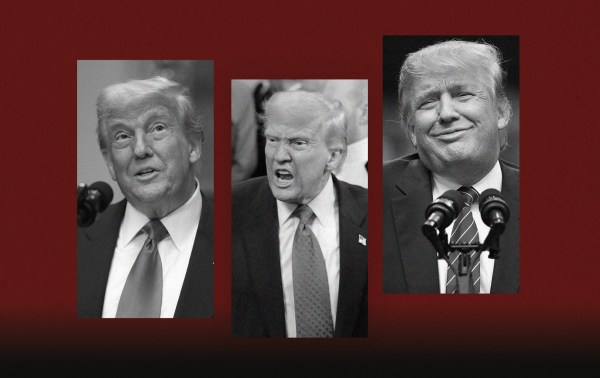
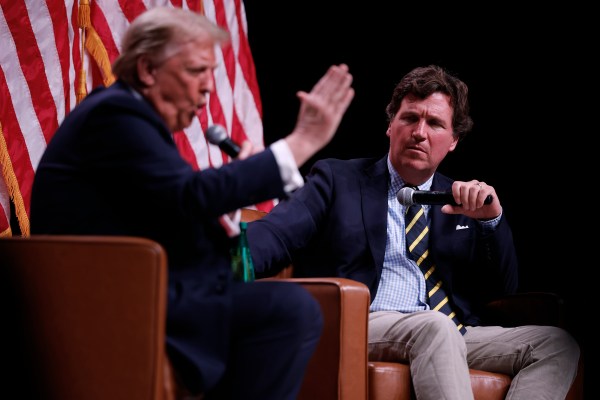
Against Exhaustion
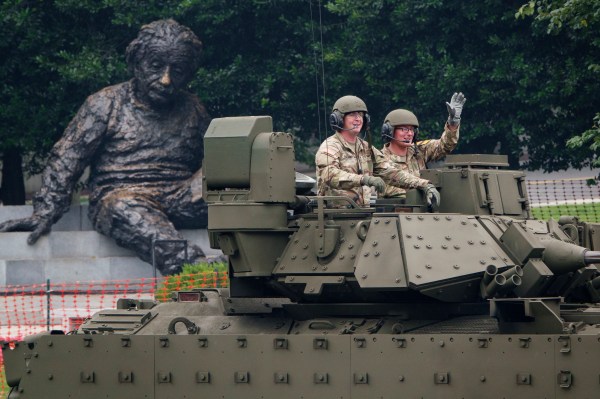
Don’t Rain on the Soldiers’ Parade

America’s Most Successful Defeat
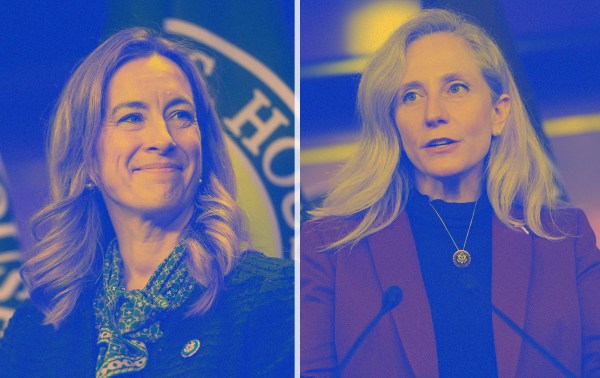
2025 Gubernatorial Races May Point the Way for Democrats

Unprovoked War

Worth Your Time
In some Los Angeles neighborhoods, immigration raids and counter-protests are already taking a toll on local businesses, Nancy Rommelmann reported for Reason magazine. “On any other Saturday, Santee Alley in downtown Los Angeles’s Fashion District would be packed shoulder-to-shoulder with people buying cut-rate electronics and quinceañera dresses and $100 three-piece suits and fake Labubu dolls. The goods are cheap, pushcart vendors sell bottled water to keep shoppers cool, and the open-air corridor stays open 365 days a year. But June 14 was not any other Saturday. It was the day of the No Kings anti-Trump protests a mile away in downtown L.A. By 4 p.m., some businesses on nearby Broadway had boarded up their stores, not wanting a repeat of the vandalism that happened the previous Saturday night, after the protests against Immigration and Customs Enforcement (ICE) raids broke up and several hundred people went on a rampage,” she wrote. “Shopkeepers on Santee Alley were worried about the opposite of looters. ‘Today is really dead,’ said Sandra, the only employee at a clothing store. Business, she estimated, was off by 95 percent. ‘On a regular day, we sell $3,000,’ she said. The day’s take so far: $100. … A week earlier, immigration agents had raided a nearby apparel warehouse, taking more than a dozen allegedly undocumented employees into custody. While no one in Santee Alley referenced that raid by name, it was clear the fear of apprehension was keeping both shop owners and customers away.”
Presented Without Comment
Forbes: Trump Says Russia—and Maybe China—Should Be in G7
Trump suggested Russia and Ukraine “wouldn’t have a war right now” if Russia were part of the alliance and also said he would be open to China joining “if someone wants to suggest China.”
Trump also blamed former Canadian Prime Minister Justin Trudeau and former President Barack Obama for kicking Russia out of the G8 in 2014 over its annexation of Crimea, a decision all seven other leaders made together.
Also Presented Without Comment
President Donald Trump on Truth Social Monday: Somebody please explain to kooky Tucker Carlson that,” IRAN CAN NOT HAVE A NUCLEAR WEAPON!”
Also Also Presented Without Comment
Politico: U.S. Scrambles To Bring Back VOA’s Persian Service Amid Iran-Israel Conflict
In the Zeitgeist
It’s been nearly two years since an injury shut down baseball superstar Shohei Ohtani from pitching, and, in that time, he has won two unanimous Most Valuable Player awards, become the first player in Major League Baseball history to hit 50 home runs and steal 50 bases in the same season, and won a World Series.
On Monday, the Los Angeles Dodgers superstar returned to the pitcher’s mound while also batting leadoff for the team.
Let Us Know
What do you think is the greatest contributor to America’s political violence problem?




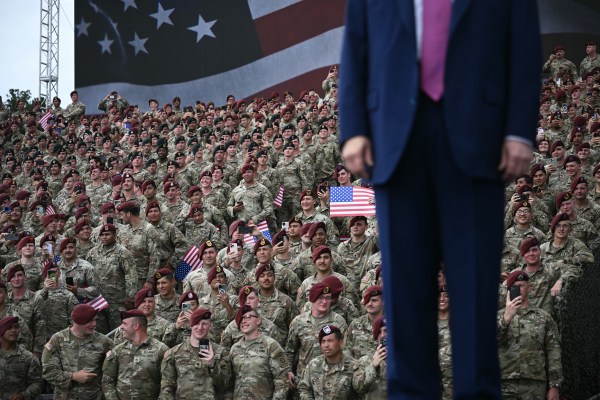
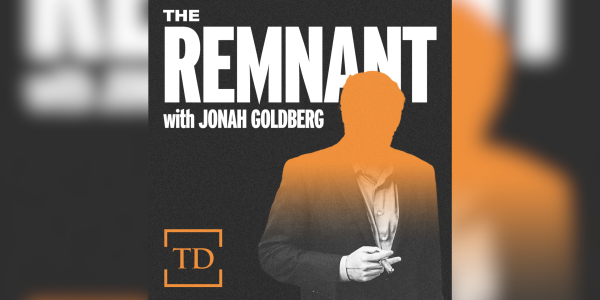
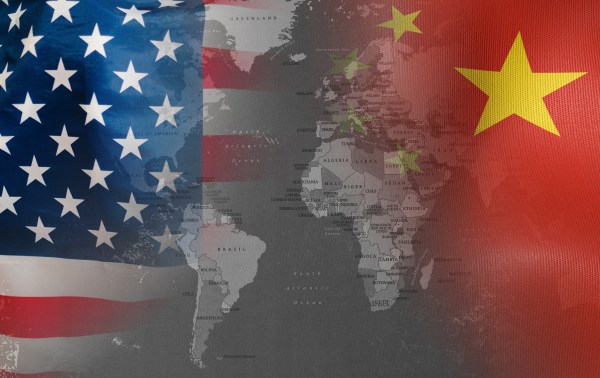
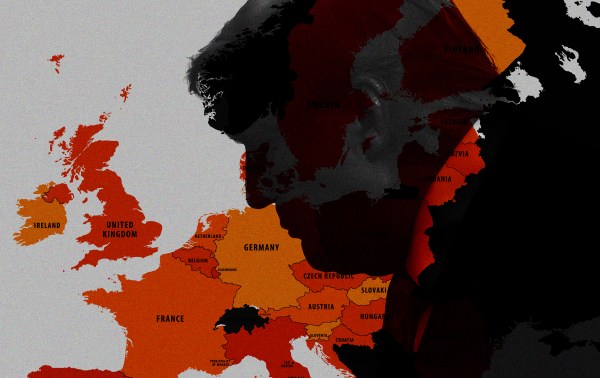


Please note that we at The Dispatch hold ourselves, our work, and our commenters to a higher standard than other places on the internet. We welcome comments that foster genuine debate or discussion—including comments critical of us or our work—but responses that include ad hominem attacks on fellow Dispatch members or are intended to stoke fear and anger may be moderated.
With your membership, you only have the ability to comment on The Morning Dispatch articles. Consider upgrading to join the conversation everywhere.